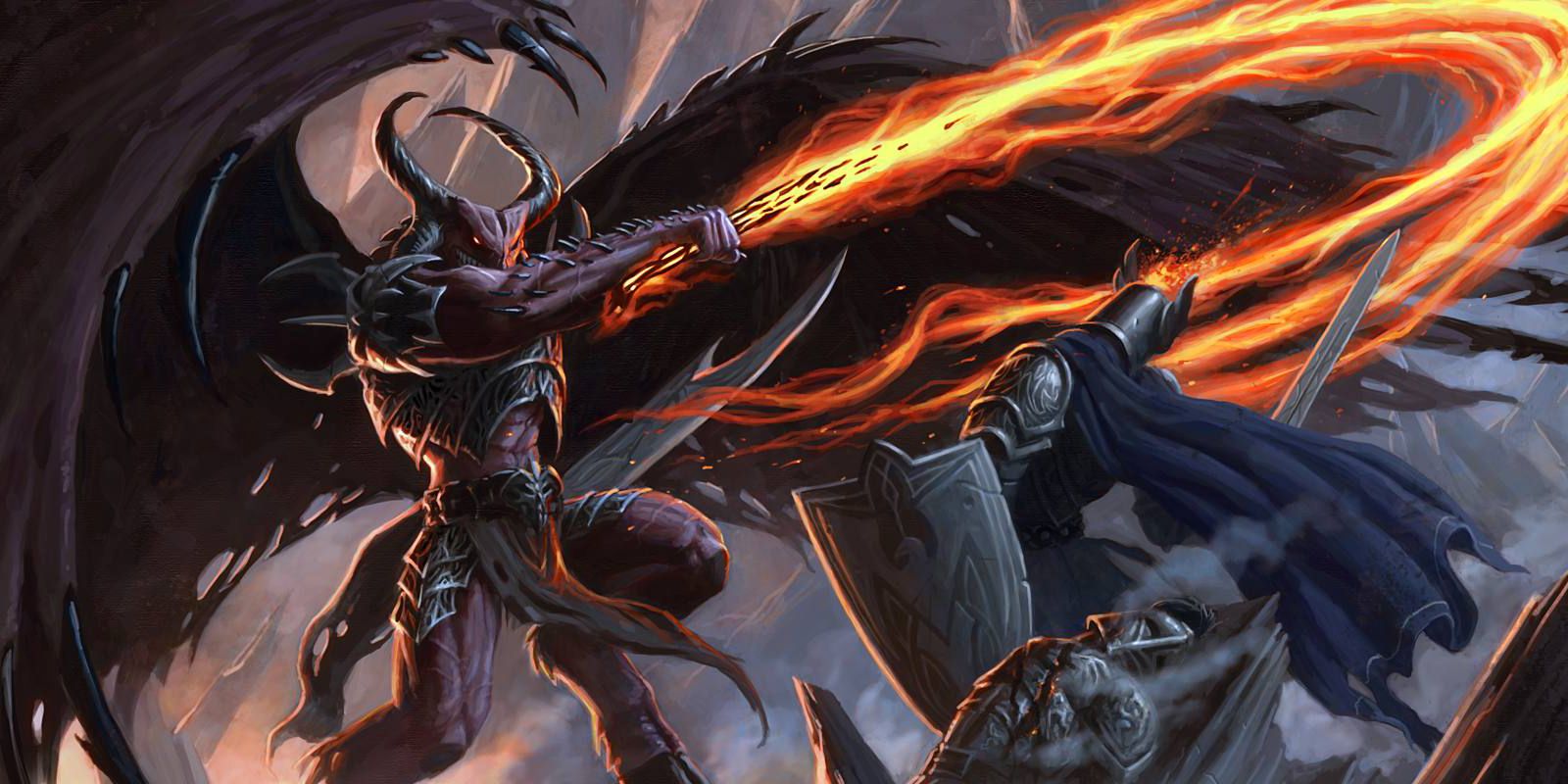The opportunity to play an evil alignment in a Dungeons & Dragons campaign can be a lot of fun with the right character build. Without the proper character concept or role in mind, it’s quite easy to fall into the “murder hobo” cycle and become a cliche. As fun as it might be to simply travel the campaign setting by killing and stealing from everyone, these characters tend to lack imagination. Here are some ideas for fun to play evil character builds, keeping in mind that these are not necessarily optimized for dominant gameplay.
Evil can be a difficult alignment to play and the interpretation of the alignment spectrum varies with each dungeon master and player. A “wolf in sheep's clothing” type of character is a good way to give an evil character some flavor. This character portrays himself in one light but isn’t quite what he seems. Dual classing a cleric and a rogue would be the easiest way to accomplish this. If dual classing isn’t desirable, simply keeping the rogue class and grabbing the D&D feats Actor and Magic Initiate can work. Deception and Persuasion are this character's key skills. Also, for this build to work, the stats Charisma and Wisdom become very important.
Dr. Jekyll and Mr. Hyde is the classic story of good and evil trapped in the same body. Playing a character with this type of inner conflict is a fun way to represent a different type of evil in a Dungeons & Dragons campaign. The simplest way to represent these two personalities in one character is building a normal (vanilla) character and adding lycanthrope. All three evil alignments are represented by lycanthropes in the Dungeons & Dragons 5e Monsters Manual. The werewolf is chaotic evil, the wereboar is neutral evil, and the wererat is lawful evil. By day, the character could be a mild-mannered bard or sorcerer, and when the moment calls, they are an evil out-of-control beast.
D&D Characters That Are Fun For Evil Alignments
This character build idea is reliant on what a DM is willing to allow in their campaign. Powerful evil alignment characters change the game's dynamic. What a player feels confident roleplaying is also always important in any Dungeons & Dragons game. If a DM is hesitant to allow a werewolf in their campaign, a good compromise is not allowing the player control of when the hybrid transformations occur. Making the curse harder to cure is also a way to make gameplay more interesting when adding the curse of lycanthrope.
Not all evil in Dungeons & Dragons has to be duplicitous or sneaky. Some evildoers truly believe they are doing the right thing. A good example of this would be a necromancer who thinks she is granting every undead she creates immortality. She believes she's doing them a favor. She adorns herself in flowers and vibrant colors and greets everyone with a smile, but at the end of the day her actions are pure evil as far as everyone else is concerned.
Dungeons & Dragons is definitely more fun with these evil character builds. A standard wizard could even be built as a necromancer. As a wizard intelligence is obviously her key stat, but charisma is her strength as well. Ritual Caster is a key feat for this character build. Adding Create Undead to the subsequent Ritual Book is also a must. After adding Create Undead to the book, a necromancer can create undead without expending a spell slot. That’s handy for creating a horde of expendable undead. Persuasion is a handy feat for this build, since convincing others that they aren’t crazy could be handy for any necromancer.

